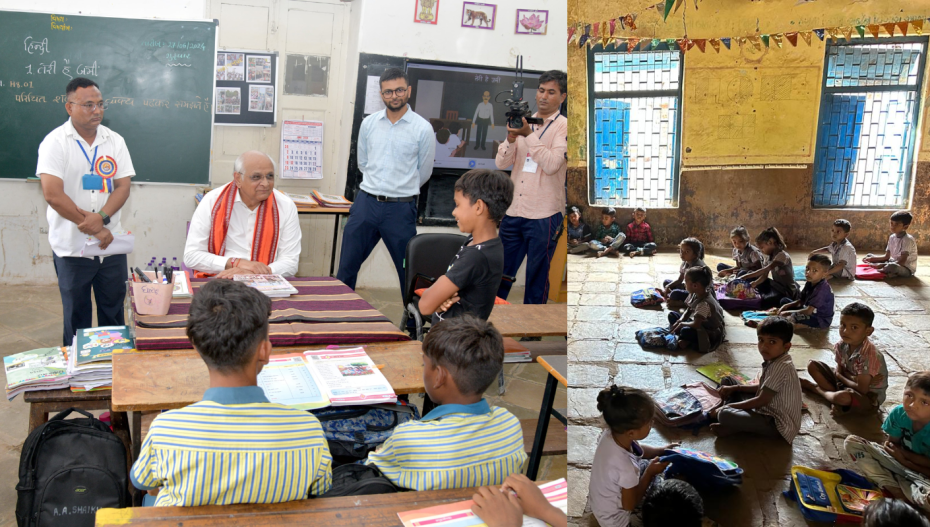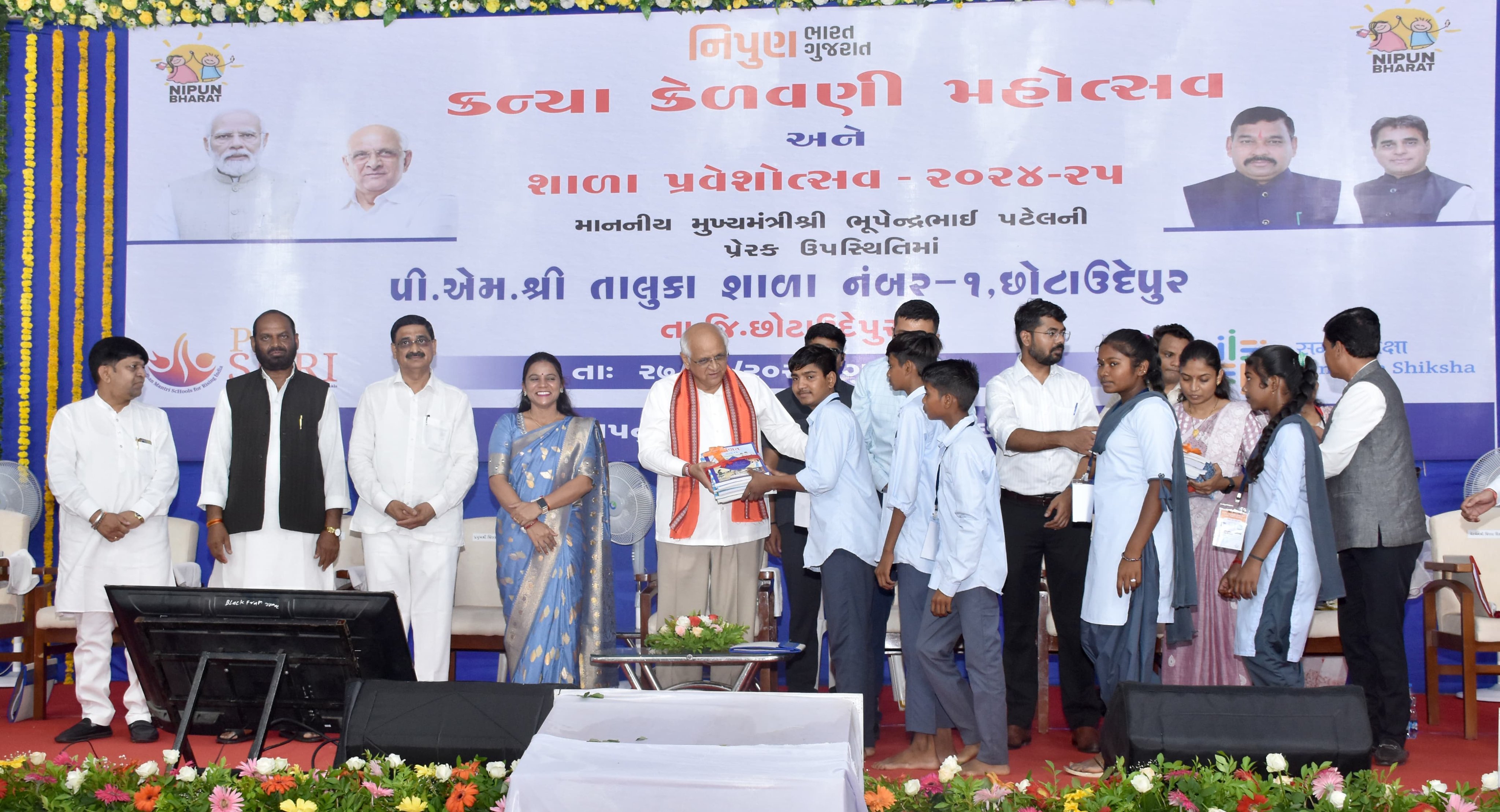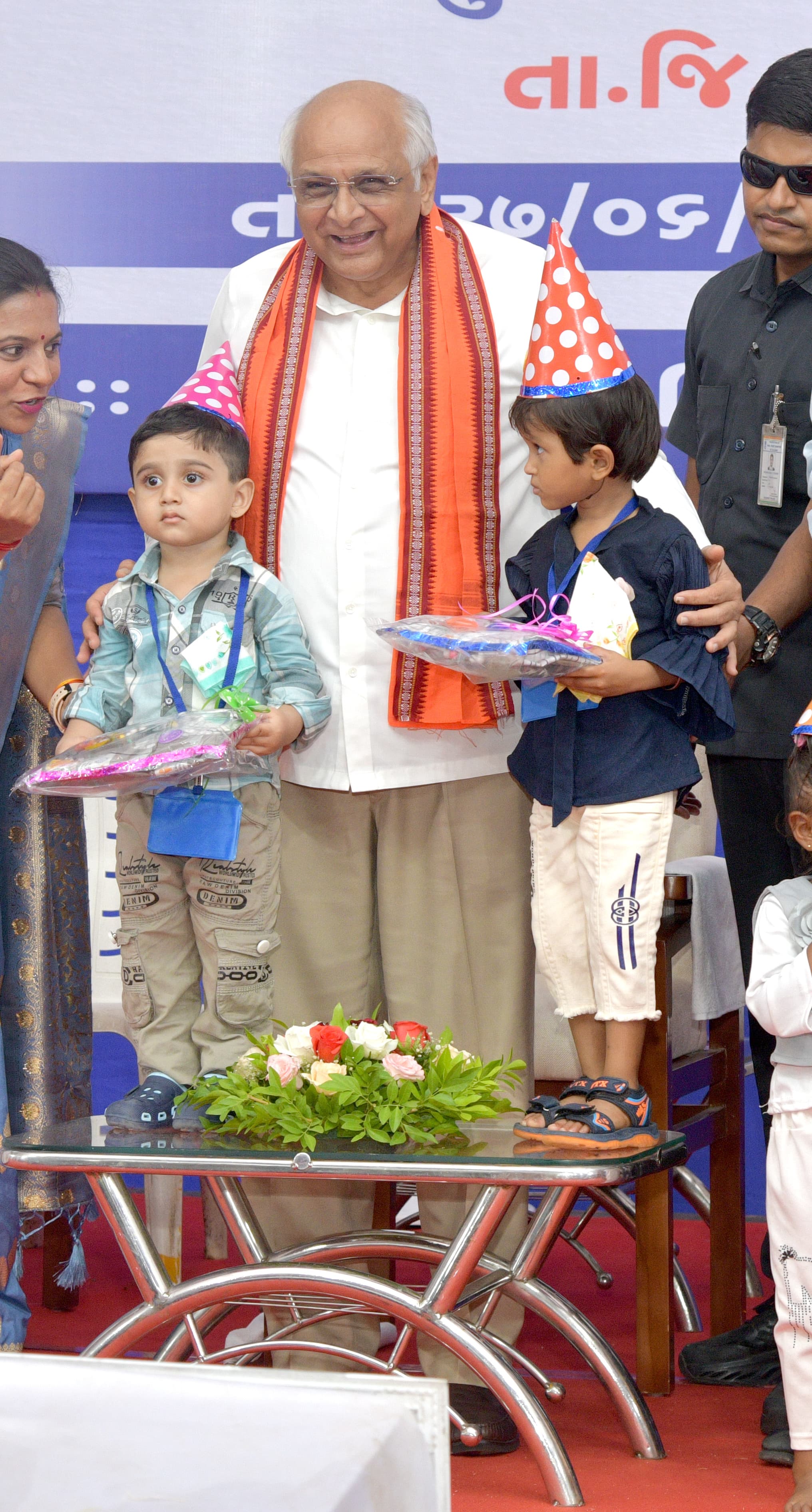In the last few days, Gujarat Chief Minister Bhupendra Patel has been busy attending the Kanya Kelavani Mahotsav and School Entrance Festival in various parts of the state. Along with him, his cabinet ministers are also seen putting efforts to improve the education system in the state by organising various initiatives. They have assured the people and students that they are receiving positive outcomes from their drives.
However, tall claims of such initiatives and outcomes are exposed after analysing data coming from various reports, including those in newspapers, answers given in the state assembly, and those of the education department.
Enrollment Claims vs Dropout Reality
The Bharatiya Janata Party (BJP)-led government’s claims of achieving a 100% enrollment rate from 75% over two decades stands in sharp contrast to the actual dropout rates observed. According to national surveys, the dropout rate has skyrocketed as students progress through the grades, reaching alarming figures of 90.90% in classes 6–8, 79.3% in classes 9–10, and 56.5% in classes 11–12. Gujarat’s overall dropout ratio of 23.3% in 2022, higher than the national average, underscores systemic challenges despite enrollment drives.

Academician Hemant Shah told the VOI that as the government claims ‘that 99 per cent enrollment has been achieved, then why Shala Pravesh Utsav (School Admission Festival) is required?’
“In the government schools, the dropout ratio between classes I and X is 35 per cent and from classes X to XII is 50 per cent. Further, on one hand, the government claims that 99 per cent of the enrollment is complete, so why did they come with the the Utsav?” he claimed.
Dr. Manish Doshi, Media Convenor of the Gujarat Congress Pradesh Committee and a senior member of the Gujarat University Executive Council, told the VOI that the BJP government is doing the enrollment drive for a short period of time. “There’s nothing big in this initiative. They are doing this for a day or two. This should be done throughout the year. There’s no proper implementation of such schemes, and common people cannot expect any positive outcome,” he said.

Infrastructure Failures
Claims of converting 20,000 schools into excellent institutions and implementing smart classrooms are debunked by reports revealing 2,574 schools in dilapidated conditions and about 7,599 schools operating under thatched roofs. Moreover, out of 44,000 schools, 14,600 are functioning without proper classrooms, affecting the learning conditions for students.
Doshi alleged, “The state government is not doing enough to improve the infrastructure. If we look at the technology area, having computers in schools is not sufficient, as there is a dearth of computer-teaching teachers. In many schools, many computer boxes are not even opened. The government must focus on teachers, infrastructure, and responsive work. They should be facilitators, not regulators.”
Teacher Shortages and Learning Concerns
The government’s assertions of enhancing educational technology through initiatives like the Diksha portal and smart labs are marred by severe teacher shortages. Shockingly, reports indicate that there is only one teacher for every 1,606 schools in Gujarat, highlighting a critical gap in quality education delivery. Vacancies persist in thousands, with 32,000 teaching posts and 3,500 headmasters unfilled, advancing the teaching crisis.

Shah further emphasised the excessive shortage of teachers in schools. “There is a shortage of 70,000 teachers in government schools. There are many reasons for the dropout, but one of the most important is also the dearth of teachers. How can two to three grades be taught together?” he questioned.
Speaking on the same issue, Doshi alleged that ‘there is no fixed and permanent salary for the teachers. Over 1400 schools have only one teacher each. With just one teacher, the work pressure is rising on them, and they are being overburdened. There is an increasing number of vacant teacher posts across the state. The situation is so bad, that in 14,600 schools, a large number of students are forced to sit in one class.’
Privatisation Concerns
Despite government claims, the closure of thousands of schools, especially in rural areas, has led to a rapid growth of the private tuition industry valued at over Rs 500 crore. This privatisation trend reflects deeper systemic failures in public education, impacting accessibility and equity.
Health and Nutrition Challenges
In addition to educational setbacks, Gujarat faces escalating health crises among children, with malnutrition cases reaching alarming levels. Over 5.70 lakh children are malnourished, a stark increase from previous years, underscoring systemic neglect and inadequate health infrastructure, including deficient Anganwadi centres.

RTE Act and Enrollment Decline
Enrollment figures under the Right to Education (RTE) Act reveal a troubling decline, with fewer children gaining admission despite statutory provisions aimed at universal education access. This decline further questions the efficacy of government policies in ensuring inclusive education.
Ahmedabad-based educational activist Sukhdev Patel told the VOI that he appreciated the efforts that began in 2004, adding that the same enthusiasm and seriousness are missing.

“When the state government talks about the achievement in enrollment, what is the base figure it is comparing with? The government does not have data about how many children are eligible for admission in grade I or kindergarten,” he alleged.
The disparity between government claims and ground realities in Gujarat’s education sector paints a troubling picture of systemic failures. Despite heavy promises and celebrations of educational festivals, the state struggles with fundamental issues of infrastructure, teacher shortages, privatisation pressures, and health challenges. As academicians call for urgent reforms, the need for transparent accountability and comprehensive policy interventions becomes ever more apparent to save Gujarat’s education system.
Also Read: Hina Khan Reveals Stage Three Breast Cancer Diagnosis
















